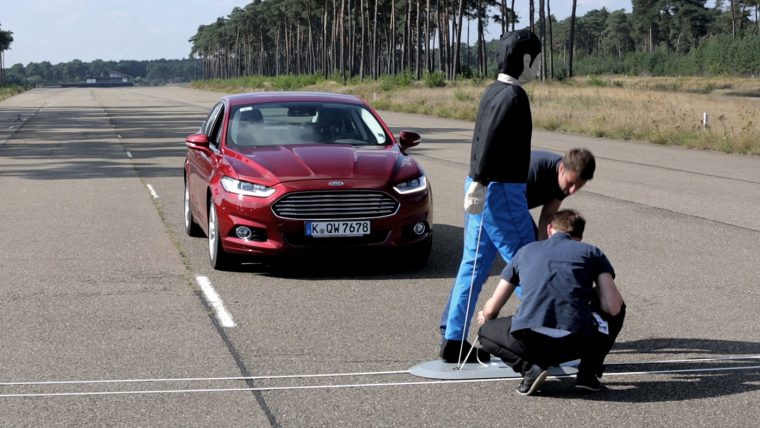
A new report reveals which small SUVs have the best pedestrian avoidance systems. The Insurance Institute for Highway Safety and the Highway Loss Data Institute have rated 11 small SUVs based on how well their automatic emergency braking functions prevented or mitigated crashes in a series of tests.
Putting pedestrian avoidance through the paces
The first scenario involves an adult pedestrian dummy crossing in front of an oncoming car. The next test simulates everyone’s worst nightmare — a child darting out from behind two parked cars, into the path of a moving vehicle. The last trial has an adult pedestrian walking in the vehicle’s lane, with their back turned away from traffic. The researchers conducted the tests on dry pavement, at speeds you’d expect to see when traveling around neighborhoods and parking lots.
Based on performance, these small SUVs fell into four ratings, from best to worst: superior, advanced, basic, and no credit. Superior-rated vehicles either avoided hitting pedestrians altogether or slowed themselves drastically enough to prevent severe injuries. Vehicles received no credit if they failed to automatically brake in time to avoid a collision. So how did the 11 SUVs fare? Here’s a breakdown:
- Superior: 2018-2019 Honda CR-V, 2019 Subaru Forester, 2019 Toyota RAV4, 2019 Volvo XC40
- Advanced: 2019 Chevrolet Equinox, 2018-2019 Hyundai Kona, 2019 Kia Sportage, 2018-2019 Mazda CX-5, 2019 Nissan Rogue
- Basic: 2019 Mitsubishi Outlander
- No credit: 2018-2019 BMW X1
The CR-V and the Forester earned kudos for issuing a warning to the driver before automatically braking. In some tests, the BMW X1 didn’t slow down in time to avoid hitting the simulated pedestrian — and in one test, it even sent the dummy flying. However, the X1 scored an “advanced” rating when avoiding front crashes with other vehicles.
About two-thirds of front crash prevention systems offer some kind of pedestrian detection capability. Most of these can detect bicycles and animals, although the IIHS and the HLDI didn’t test these features.
Source: IIHS
The News Wheel is a digital auto magazine providing readers with a fresh perspective on the latest car news. We’re located in the heart of America (Dayton, Ohio) and our goal is to deliver an entertaining and informative perspective on what’s trending in the automotive world. See more articles from The News Wheel.